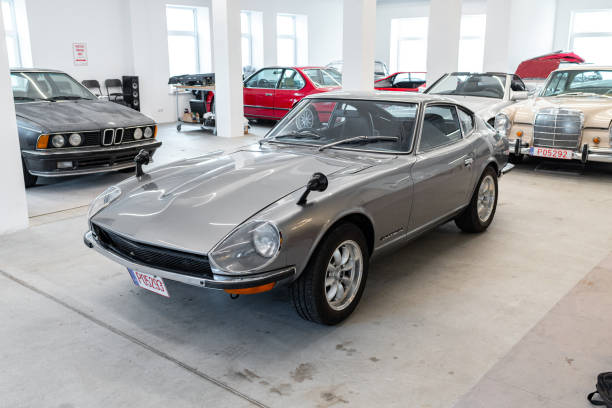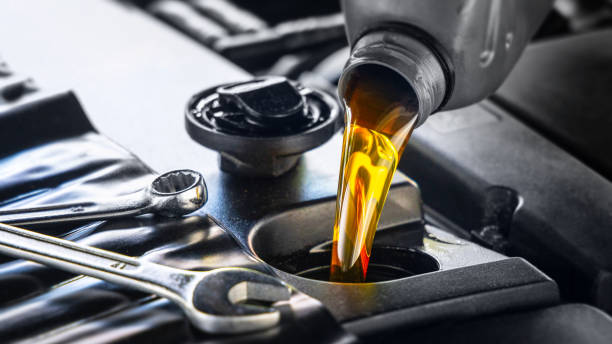Japanese Domestic Market (JDM) refers to vehicles and parts originally produced for Japan’s market. These cars were not initially intended for export, making them exclusive and highly desirable internationally.
Car enthusiasts outside Japan began discovering JDM vehicles through motorsports and media. Their unique design, tuning potential, and affordability sparked global curiosity, leading to a passionate subculture around them.
Unlike mass-market vehicles, JDM cars often came with advanced features, lightweight designs, and turbocharged engines. This engineering focus attracted tuners and collectors seeking both performance and authenticity.
Over time, JDM became more than just a car preference. It evolved into a lifestyle involving customization, community gatherings, fashion, and media that continues influencing global car culture today.
The Origins of JDM
JDM roots trace back to post-war Japan, where automakers focused on compact, fuel-efficient cars. Brands like Toyota, Honda, and Nissan began developing innovative models for domestic use.
By the 1970s and 1980s, Japanese manufacturers were producing high-performance cars like the Nissan Skyline and Toyota Celica. These vehicles gained fame for combining speed with reliability.
Due to import restrictions, many iconic models remained exclusive to Japan. This limited availability increased curiosity among overseas car lovers who accessed them through grey markets.
As Japanese car manufacturers refined performance and technology, their domestic lineup gained mythical status. JDM cars symbolized a blend of engineering excellence and street credibility.
Influence of Manga and Anime
JDM culture gained global visibility through Japanese manga and anime. One of the most influential series, Initial D, introduced the Toyota AE86 and mountain drifting to millions.
Initial D not only showcased car culture but dramatized real street racing scenarios. Its focus on technique, tuning, and passion resonated with young enthusiasts globally.
Other anime series also highlighted modified cars, racing, and the camaraderie of drivers. These stories inspired fans to replicate builds and driving styles seen onscreen.
Visual media helped embed JDM aesthetics and philosophy in car communities worldwide. Storylines often celebrated the underdog tuner spirit, further fueling appreciation for Japanese performance cars.
The Role of Motorsports
Motorsports like Super GT, D1 Grand Prix, and Formula Drift played a vital role in boosting JDM’s popularity. These events showcased real-world performance and innovation from Japanese cars.
Drifting competitions brought spotlight to rear-wheel-drive legends like the Nissan Silvia and Mazda RX-7. Their agility, balance, and tuning capability made them favorites among racers.
Rally racing also highlighted JDM’s strength, especially with Subaru Impreza and Mitsubishi Lancer Evolution dominating the global rally scene throughout the ’90s and 2000s.
These motorsports not only tested machines but built brands. Drivers and tuners proved that JDM vehicles could rival or outperform European and American performance icons.
Tuning and Customization Scene
One of JDM culture’s most exciting elements is the emphasis on tuning. Owners modify suspension, engines, and interiors to reflect personal style or racing preferences.
JDM cars are known for their adaptability. Whether it’s a turbo upgrade or widebody kit, platforms like the Nissan 350Z and Honda Civic can be deeply personalized.
Car meets and online forums helped exchange ideas, parts, and inspiration globally. This led to widespread adoption of Japanese tuning styles even beyond JDM-specific builds.
JDM’s modification scene emphasizes balance between function and form. While aesthetics matter, performance gains and drivability remain core values for serious enthusiasts and tuners alike.
Global Popularity of JDM Imports
In the 1990s and early 2000s, several countries began easing import laws, allowing classic JDM models entry. This sparked a surge in demand and collection of rare imports.
Importers and collectors began sourcing Skylines, Supras, RX-7s, and Civics. These cars, once seen only in magazines or video games, became attainable for dedicated fans.
The 25-year import rule in the U.S. played a key role in raising anticipation. Each eligible model year added fresh excitement and increased market buzz.
Rising demand caused JDM car values to skyrocket. Collectors now compete fiercely for clean or low-mileage imports, making the scene both rewarding and expensive.
JDM and Street Racing Culture
The JDM rise coincided with street racing’s global popularity. Japanese cars became symbols of underground racing, blending speed, affordability, and stealth into an appealing package.
Movies like Fast and Furious glamorized this image. Street races in Tokyo and Los Angeles featured tuned JDM icons like the Nissan 240SX and Mazda RX-7.
While illegal racing carries risks, it fostered brotherhoods and communities bonded by speed. Many legends of the scene began as garage-built JDM projects turned dragstrip monsters.
Today, many former street racers have moved into professional motorsports or tuning businesses, keeping the rebellious JDM spirit alive within legal and competitive environments.
The Role of Video Games
Video games helped fuel international interest in JDM vehicles. Titles like Gran Turismo, Need for Speed, and Forza Motorsport introduced iconic models to new generations.
Players learned about JDM performance through virtual racing. The ability to test-drive and customize cars digitally influenced real-world purchasing and modification decisions.
Games emphasized Japanese brands’ engineering advantages, further distinguishing JDM from competitors. Virtual garages filled with Skylines and Evos became aspirational goals for many fans.
In-game realism, combined with authentic tuning options, made video games a gateway to real-life JDM ownership. Digital exposure led to tangible passion among car enthusiasts worldwide.
Car Meets and JDM Communities
JDM communities thrive through local meets, car shows, and online platforms. These gatherings allow fans to showcase builds, swap parts, and share stories of dedication.
From Tokyo’s Daikoku Parking Area to California’s Cars and Coffee, JDM cars bring diverse enthusiasts together, unified by shared admiration for Japanese engineering.
Social media platforms like Instagram and TikTok have amplified this connection. Builders and tuners now reach global audiences, inspiring others with creativity and craftsmanship.
JDM communities value respect, detail, and storytelling. Each build represents personal taste, countless hours, and a deep appreciation for automotive heritage and individuality.
The Fashion and Lifestyle Influence
JDM has influenced more than cars—it’s shaped fashion and lifestyle choices. Brands like Illest, Greddy, and HKS extend their identity into clothing and accessories.
Wearing JDM-inspired apparel signals belonging to a niche culture. Hoodies with car schematics or stickers from tuning shops are common expressions of automotive passion.
Tokyo streetwear also complements the aesthetic. JDM lovers often mix vintage racing jackets, drift team patches, and custom shoes to reflect the movement’s urban roots.
The lifestyle element ensures JDM isn’t just about driving. It’s about living the culture, embracing individuality, and connecting with like-minded fans across the globe.
Challenges and Regulations
Despite its growth, JDM culture faces challenges. Import laws, emissions regulations, and insurance costs make ownership complex and expensive in many regions.
Governments have cracked down on street racing and illegal modifications, leading to increased scrutiny on JDM owners. Proper documentation and compliance are now crucial.
Scarcity of genuine parts also presents difficulties. As older models age, finding replacements or restoration components requires patience, knowledge, and often, international sourcing.
Nevertheless, enthusiasts adapt. They build communities to support one another, and creative solutions like 3D printing or local fabrication help preserve these legendary machines.
The Future of JDM Culture
JDM’s future looks bright, with new generations embracing it through social media, hybrid tuning, and sustainable practices. Electrification may influence future builds and parts development.
Japanese manufacturers continue honoring their roots. Cars like the new Nissan Z and Toyota GR series keep performance alive while adapting to modern emissions standards.
JDM culture also grows through events, YouTube channels, and digital influencers. Online presence allows even remote fans to participate and contribute to its evolving legacy.
As the world changes, JDM remains a dynamic, passionate space. It celebrates innovation, heritage, and community—ensuring its lasting impact on automotive enthusiasts everywhere.












